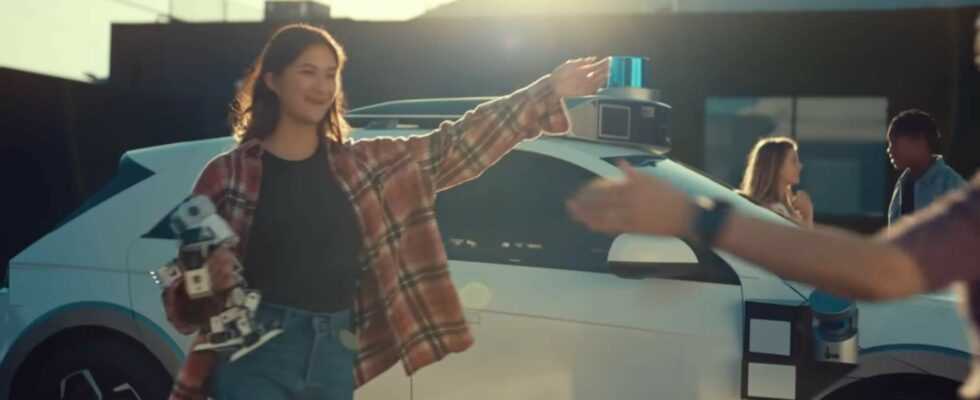While autonomous cars must erase human errors in the driving of the future, Hyundai seems to take the opposite course by announcing robotaxis with humanist virtues.
From 2023, Hyundai IONIQ 5 robotaxis should be circulating in the streets of Las Vegas. The service should then extend to several major cities in the United States. If robotaxis experiments are not new on the streets of some major American cities, the approach of Motional – a joint venture between Hyundai and Aptiq – is a little different, since the teams rely heavily on the human and protective aspect of their service. . Is it to reassure future users of the brand’s autonomous taxis?
A classic robotaxi base
The robot taxi was developed on the basis of an IONIQ 5 electric vehicle, specially equipped for level 4 autonomous driving. It was first presented to the public at the IAA Mobility fair in Munich in September 2021.
Unlike the consumer model, this copy displays many additional apparent sensors. The robotaxi includes more than 30 sensors, including lidar, radar and cameras placed inside and outside. Everything must offer the vehicle 360° vision and the ability to detect obstacles up to 300m away. The autonomous vehicle will retain its steering wheels and pedals, even if no driver will be present on board.
If the technical basis is nothing original, it is the software layer that can make all the difference. It is at this level that the gaps in autonomous driving technologies widen between the various experimental projects. This is also what can cause an autonomous vehicle to make the headlines in the news section, following an accident.
“A mobility solution with a touch of humanity”
To differentiate themselves from other autonomous robotaxis solutions, Motional and Hyundai seem to want to reassure future users of the service by focusing their communication around the following message: “ The IONIQ 5 robotaxi is intended to be a mobility solution with a touch of humanity — and not just without a human driver. “.
Humanizing the service of a robot may seem paradoxical, since the very principle of autonomous driving is to overcome human errors, which cause accidents on the road, by replacing the human factor with calculations and algorithms. But bringing a human touch still seems necessary to convince customers that they are safe on board these vehicles. Without customers, these robotaxis have no use on our roads.
Through two videos, Hyundai wants to demonstrate that the autonomous vehicle takes care of its occupants, and that the vehicle also adopts very safe driving by anticipating the dangers of the road.
From theory to practice, we will quickly see if Hyundai’s artificial intelligence algorithms keep their promises. Making algorithms more human is reminiscent of another product acquired by the Korean group Hyundai in 2021. Indeed, Boston Dynamics is the perfect illustration of this with its various robots.
If the robotaxis work without hitting the headlines, the service could quickly extend from Las Vegas to other American cities, authorizing the circulation of level 4 autonomous vehicles. Hyundai hopes to quickly be able to develop the service everywhere in the world. By then, the legislation of the various countries will have to evolve to authorize this type of vehicle on the roads.
